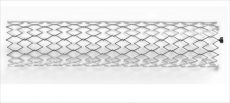According to this study simultaneously presented at the European Society of Cardiology Congress 2017 and published in the New England Journal of Medicine, routinely providing supplemental oxygen therapy to patients without hypoxemia with suspected acute myocardial infarction did not result in a reduction in the 1-year risk of all-cause mortality when compared with patients receiving…
Routine FFR in Patients with Acute Coronary Syndrome?
Fractional flow reserve (FFR) has proven to be superior to angiography as a guide to revascularization due to a significant reduction in the number of both long-term and short-term events. Furthermore, deferring treatment of lesions without evidence of ischemia offers an excellent prognosis. Many studies including mostly stable patients showed a significant degree (as high…
Polymer-Free DES Also Show Efficacy in Anticoagulated Patients with High Risk for Bleeding
Patients who receive chronic anticoagulation therapy and then undergo angioplasty are frequently discharged on a triple anti-thrombotic scheme that usually includes aspirin, clopidogrel, and warfarin. The optimal duration of this indication remains unclear, particularly for patients at high bleeding risk. According to expert consensus, patients receiving chronic anticoagulation may receive from 1 to 12 months of dual…
“Ad Hoc” PCI during TAVR: No Impact on Safety or Long Term Outcomes
According to a recent study published in Circulation Cardiovascular Interventions, screening for coronary artery disease (CAD) with an invasive coronary angiography (as part of the protocol prior TAVR) and performing PCI and TAVR in the same session, has no impact on periprocedural safety or on long term outcomes. Study outcomes offer new hope, especially as regards using TAVR…
Self-Expanding Stents Are Superior to Balloon-Expandable Stents in the Iliac Arteries
Courtesy of Dr. Carlos Fava. Severe atherosclerotic disease in iliac arteries is experienced by 15% of all men and 5% of all women. TAC II recommends angioplasty for type-A, -B, and -C lesions. As regards stent type, self-expanding stent (SE, more elasticity) vs. balloon-expandable stent (SB, more radial strength), Reekers indicates superior target lesion revascularization (TLR) with SE. However, there…
VALIDATE-SWEDEHEART: bivalirudin seems to be losing ground
Another important work that does not see the benefits of bivalirudin over heparin as monotherapy as regards both efficacy (death and MI) and safety end points (bleeding) in patients undergoing acute myocardial infarction with and without ST elevation. The study VALIDATE-SWEDEHEART, presented at ESC, simultaneously published in the New England Journal of Medicine, randomized 6000 patients…
Early Invasive Strategy Benefits High-Risk Patients
Early angiography is not associated with a reduction in mortality compared with a more delayed invasive strategy in patients with non-ST-elevation acute coronary syndrome (NSTE-ACS). However, a new meta-analysis published by The Lancet supports the idea that certain high-risk patients would benefit from it. Patients with elevated cardiac biomarkers, a high GRACE score, diabetes, or advanced…
Striking Finding on Diabetes and Bypass Graft Patency
The higher rate of restenosis in the diabetic population is historic and has been reproduced in all studies and with all kinds of stents, but it was only after the FREEDOM trial when we found out about the higher infarction rate with PCI compared to surgery. This is why 50% of patients undergoing CABG are diabetic. Apart from the above…
Should We Begin to Use IVUS in CTO?
Courtesy of Dr. Carlos Fava. Currently, chronic total occlusions (CTO) are one of the obstacles that coronary angioplasties must overcome, particularly with the development of drug-eluting stents (DES) and new devices and strategies for these challenging lesions. However, there is little information on the safety, efficacy, and real clinical benefit of implanting stents of over 60 mm (known as full metal jackets, FMJ).…
Nicaragua Sessions: Contest for Young Interventionists
Sponsored by Abbott Vascular LATAM 33rd SOLACI Regional Sessions – 12° Central America and the Caribbean Regional Meeting September 29th and 30th, 2017. Managua, Nicaragua. Case Submission: “Fostering Hemodynamics among Young Cardiologists”. It is with great pleasure that we hereby invite all young Latin American cardiologists specializing in hemodynamics to submit relevant clinical cases to the…
Are Bioresorbable-Polymer Stents More Thrombogenic than Durable-Polymer Second-Generation Stents?
Courtesy of Dr. Cristian Jesús Rodríguez. Most stents currently used in percutaneous coronary intervention (PCI) are durable-polymer second-generation drug-eluting stents (DP-DES, with everolimus or zotarolimus). However, it has been argued that the persistence of such a polymer after complete drug elution is one of the main factors for a dangerous complication: stent thrombosis (ST). After…










